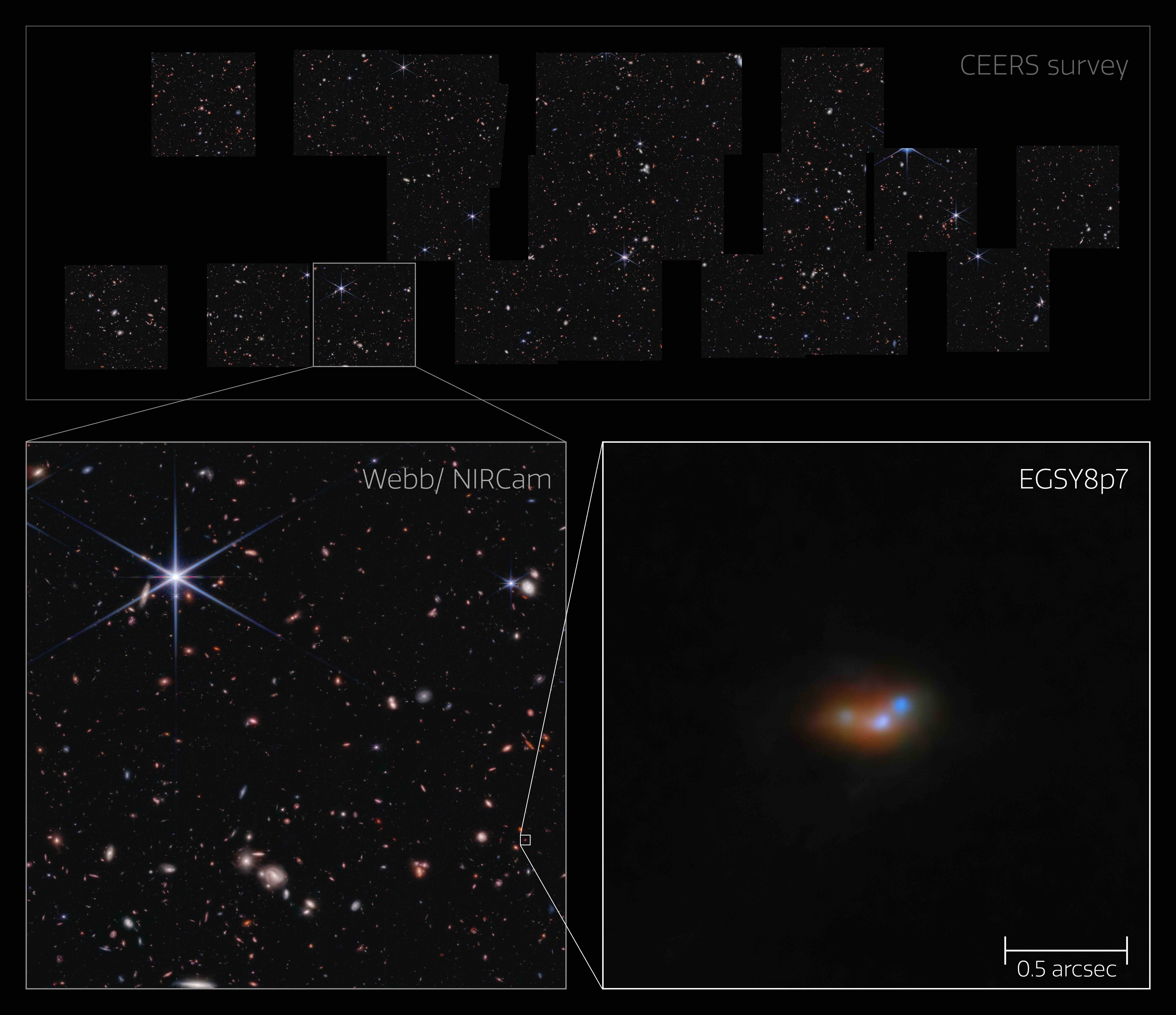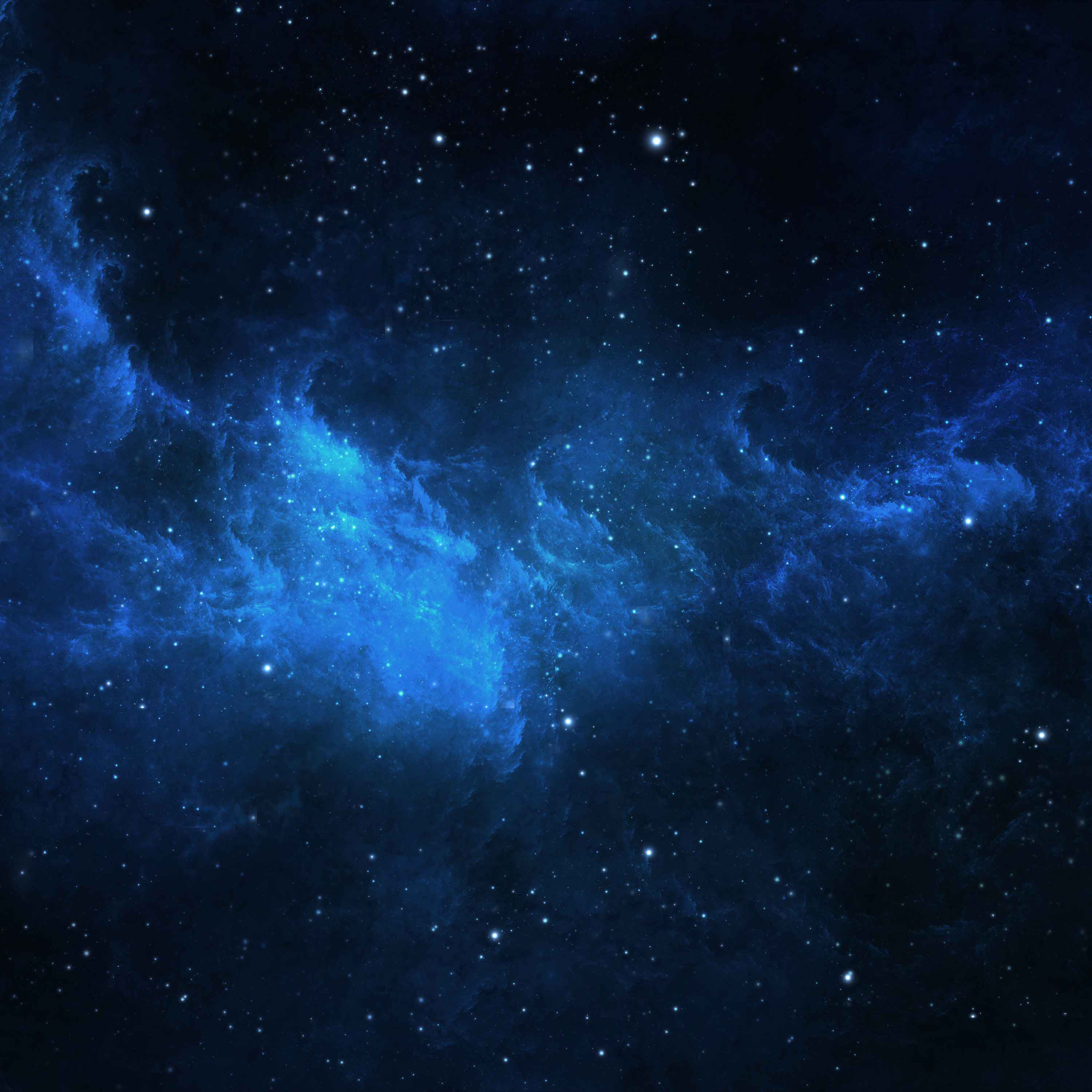
One of the key missions of the NASA/ESA/CSA James Webb Space Telescope is to probe the early Universe. Now, the unmatched resolution and sensitivity of Webb’s NIRCam instrument have revealed, for the first time, what lies in the local environment of galaxies in the very early Universe. This has solved one of the most puzzling mysteries in astronomy — why astronomers detect light from hydrogen atoms which should have been entirely blocked by the pristine gas that formed after the Big-Bang. These new Webb observations have found small, faint objects surrounding the very galaxies that show the ‘inexplicable’ hydrogen emission. In conjunction with state-of-the-art simulations of galaxies in the early Universe, the observations have shown that the chaotic merging of these neighbouring galaxies is the source of this hydrogen emission.
Light travels at a finite speed (300 000 kilometres per second), which means that the further away a galaxy is, the longer it has taken the light from it to reach our Solar System. As a result, not only do observations of the most distant galaxies probe the far reaches of the Universe, but they also allow us to study the Universe as it was in the past. In order to study the very early Universe, astronomers require exceptionally powerful telescopes that are capable of observing very distant — and therefore very faint — galaxies. One of Webb’s key capabilities is its ability to observe those very distant galaxies, and hence to probe the early history of the Universe. An international team of astronomers have put Webb’s amazing capacity to excellent use in solving a long-standing mystery in astronomy.
The very earliest galaxies were sites of vigorous and active star formation, and as such were rich sources of a type of light emitted by hydrogen atoms called Lyman-α emission. However, during the epoch of reionisation an immense amount of neutral hydrogen gas surrounded these areas of active star formation (also known as stellar nurseries). Furthermore, the space between galaxies was filled by more of this neutral gas than is the case today. The gas can very effectively absorb and scatter this kind of hydrogen emission, so astronomers have long predicted that the abundant Lyman-α emission released in the very early Universe should not be observable today. This theory has not always stood up to scrutiny, however, as examples of very early hydrogen emission have previously been observed by astronomers. This has presented a mystery: how is it that this hydrogen emission — that should have long since been absorbed or scattered — is being observed? Researcher at the University of Cambridge and principal investigator on the new study Callum Witten elaborates:
“One of the most puzzling issues that previous observations presented was the detection of light from hydrogen atoms in the very early Universe, which should have been entirely blocked by the pristine neutral gas that was formed after the Big-Bang. Many hypotheses have previously been suggested to explain the great escape of this ‘inexplicable’ emission.”
The team’s breakthrough came thanks to Webb’s extraordinary combination of angular resolution and sensitivity. The observations with Webb’s NIRCam instrument were able to resolve smaller, fainter galaxies that surround the bright galaxies from which the ‘inexplicable’ hydrogen emission had been detected. In other words, the surroundings of these galaxies appear to be a much busier place than we previously thought, filled with small, faint galaxies. Crucially, these smaller galaxies were interacting and merging with one another, and Webb has revealed that galaxy mergers play an important role in explaining the mystery emission from the earliest galaxies. Nicolas Laporte, team member from Aix-Marseille University, adds:
“Where Hubble was seeing only a large galaxy, Webb sees a cluster of smaller interacting galaxies, and this revelation has had a huge impact on our understanding of the unexpected hydrogen emission from some of the first galaxies.”
The team then used state-of-the-art computer simulations to explore the physical processes that might explain their results. They found that the rapid build-up of stellar mass through galaxy mergers both drove strong hydrogen emission and facilitated the escape of that radiation via channels cleared of the abundant neutral gas. So the high merger rate of the previously unobserved smaller galaxies presented a compelling solution to the long-standing puzzle of the ‘inexplicable’ early hydrogen emission.
The team are planning follow up observations with galaxies at various stages of merging, in order to continue to develop their understanding of how the hydrogen emission is ejected from these changing systems. Ultimately, this will enable them to improve our understanding of galaxy evolution.
These findings have been published today in Nature Astronomy.




